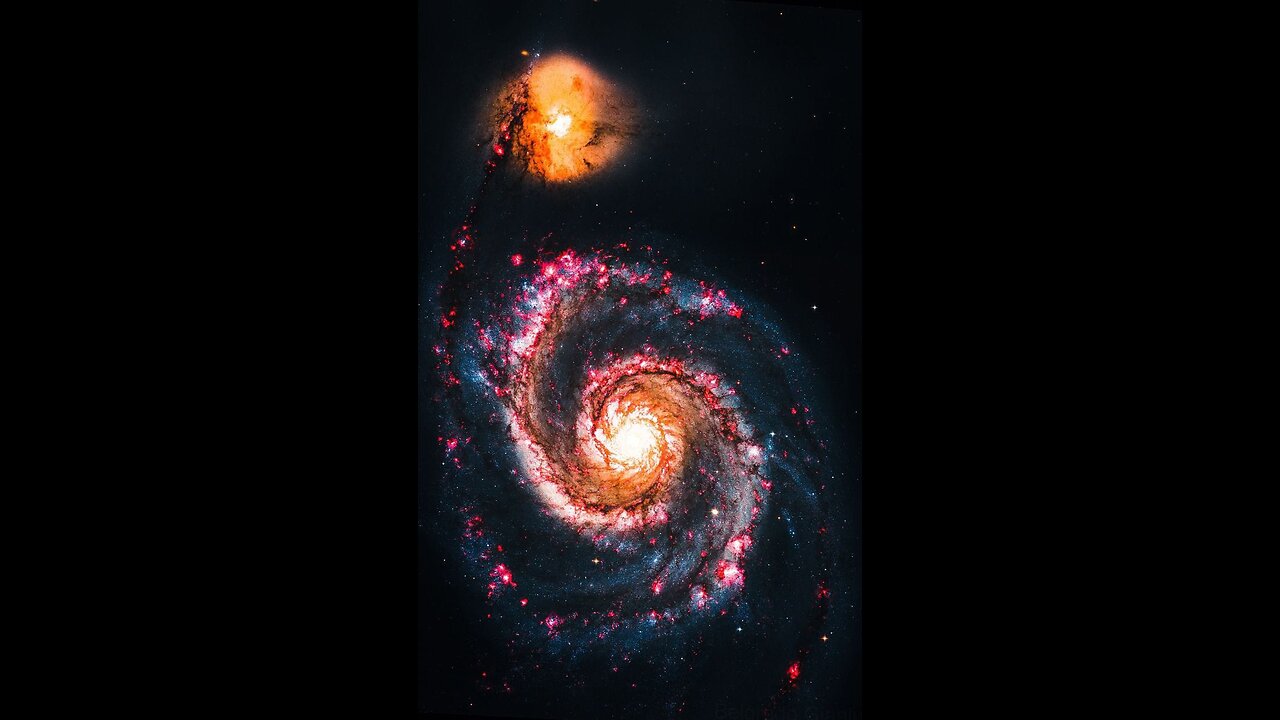Premium Only Content

Hubble's 31st Anniversary #Ultra HD #Nasa #Nasa Universe #Hubble #Star #Explosion
A giant Hubble star is a rare and spectacular phenomenon that occurs when a massive star nears the end of its life and ejects a huge amount of material into space. The star’s powerful radiation and stellar winds shape the ejected material into a bubble-like structure that can span several light-years across. The Hubble Space Telescope has captured stunning images of some of these giant stars and their bubbles, revealing their beauty and complexity.
One example of a giant Hubble star is AG Carinae, one of the brightest stars in our galaxy, which is surrounded by a glowing halo of gas and dust. This star is so unstable that it periodically blows off parts of its surface, creating a shell that is about five light-years wide1. The star is estimated to be 70 times more massive than our Sun and shines with the brilliance of one million suns. It belongs to a class of stars called luminous blue variables, which are known for their extreme variability and outbursts.
Another example is Betelgeuse, a red supergiant star that is well-known for its dramatic dimming in 2019. Astronomers have concluded that this was caused by a gigantic surface mass ejection, in which the star lost a substantial part of its visible surface and produced a cloud of dust that temporarily obscured its light. This event was unprecedented in the history of stellar observations and revealed new insights into how red stars lose mass before exploding as supernovae. Betelgeuse is about 20 times more massive than our Sun and 900 times larger in diameter.
These giant Hubble stars are fascinating objects that showcase the diversity and dynamism of stellar evolution. They are also potential candidates for future supernova explosions, which would be visible from Earth and provide valuable information about the origin and fate of the universe. However, predicting when these stars will explode is very difficult, as they are constantly changing and surprising us with their behavior. The Hubble Space Telescope continues to monitor these stars and their bubbles, hoping to catch them in their final moments of glory.
-
 1:32:08
1:32:08
Robert Gouveia
4 hours agoNew Year TERROR; Trump Speaks at Mar-a-Lago; Speaker Johnson FIGHT
21.6K19 -
 22:21
22:21
Russell Brand
1 day agoVaccines Don't Cause Autism*
106K552 -
 2:05:27
2:05:27
The Dilley Show
3 hours ago $11.78 earnedNew Years Agenda, New Orleans Terror Attack and More! w/Author Brenden Dilley 01/01/2025
41.7K14 -
 25:45
25:45
Outdoor Boys
2 days ago3 Days in Arctic Survival Shelter - Solo Bushcraft Camping & Blacksmithing
34K16 -
 2:59:05
2:59:05
Wendy Bell Radio
10 hours agoAmerica Is Back
85.5K104 -
 1:45:57
1:45:57
Tucker Carlson
5 days agoAaron Siri: Everything You Should Know About the Polio Vaccine, & Its Link to the Abortion Industry
120K173 -
 1:46:38
1:46:38
Real Coffee With Scott Adams
5 hours agoEpisode 2707 CWSA 01/01/25
35.3K25 -
 14:06
14:06
Stephen Gardner
5 hours ago🔥Trump FIGHTS BACK: Biden White House BUSTED in MAJOR SCANDAL!
44K166 -
 6:08:13
6:08:13
MissesMaam
17 hours agoCelebrating New Years 2025 💚✨
86K17 -
 3:22:32
3:22:32
PandaSub2000
3 days agoPlatformer ExtravaPandza | ULTRA BEST AT GAMES (Original Live Version)
126K36